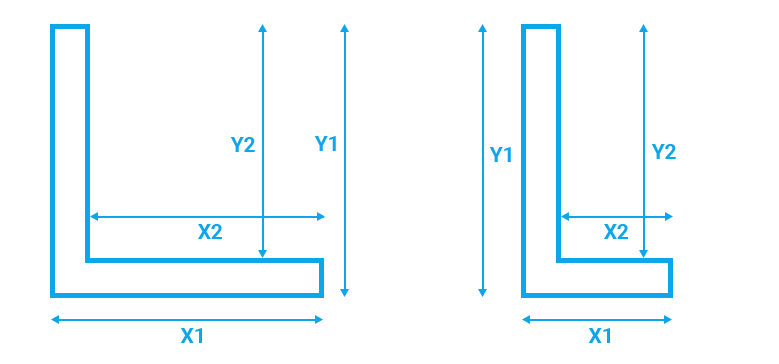Efficiently estimate the weight of L-Beams for structural calculations and construction planning.
The L bar weight calculator is a valuable tool for engineers, builders, and anyone working with L-shaped bars. This tool simplifies the process of determining the weight of L bars, whether they have equal or unequal cross-sectional areas.
L bars with equal cross-sectional areas have two legs of the same dimensions. This symmetry simplifies the weight calculation process.
The formula for the cross-sectional area (A) of an L bar with equal legs is given by:

Unequal L bars introduce additional considerations, especially when calculating the volume.
The cross-sectional area (A) for unequal L sections is determined using the formula:
Where,
The volume (V) of the unequal L section is then calculated by multiplying the cross-sectional area by the length (L):
This formula takes into account the outer and inner dimensions of the unequal L bar, providing a comprehensive understanding of its volume.
With the cross-sectional area determined, the weight (W) of an L bar can be calculated using the formula:
W = A × L × ρ
ρ is the density of the material.
Understanding the theory behind the L bar weight calculator is essential for accurate calculations. The calculator utilizes the basic principles of geometry and material science.
By inputting the dimensions and material properties, the calculator can determine the cross-sectional area and subsequently calculate the weight of the L bar.
This tool streamlines the process, saving time and ensuring precision in various applications.
The L bar weight calculator is versatile and can handle a wide range of materials, including steel, aluminum, and other common alloys. Users can input the specific density of the material to obtain accurate weight calculations.
The calculator is designed to handle both equal and unequal L bars, accommodating variations in leg dimensions. However, for highly irregular shapes, it's recommended to consult with an engineer for precise calculations.
Yes, the L bar weight calculator supports both metric and imperial units. Users can input dimensions in millimeters, centimeters, inches, or any other unit, ensuring flexibility for a global user base.
The accuracy of weight calculations depends on the accuracy of the input data. Providing precise dimensions and material properties ensures reliable results. It's recommended to double-check the input values before relying on the calculated weight.